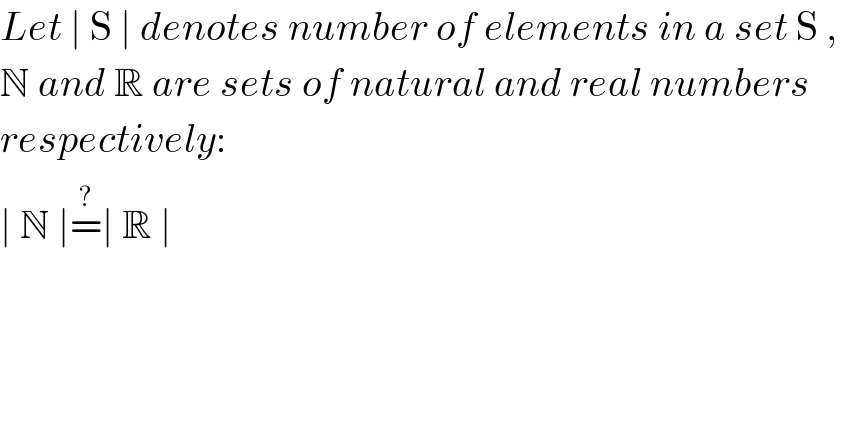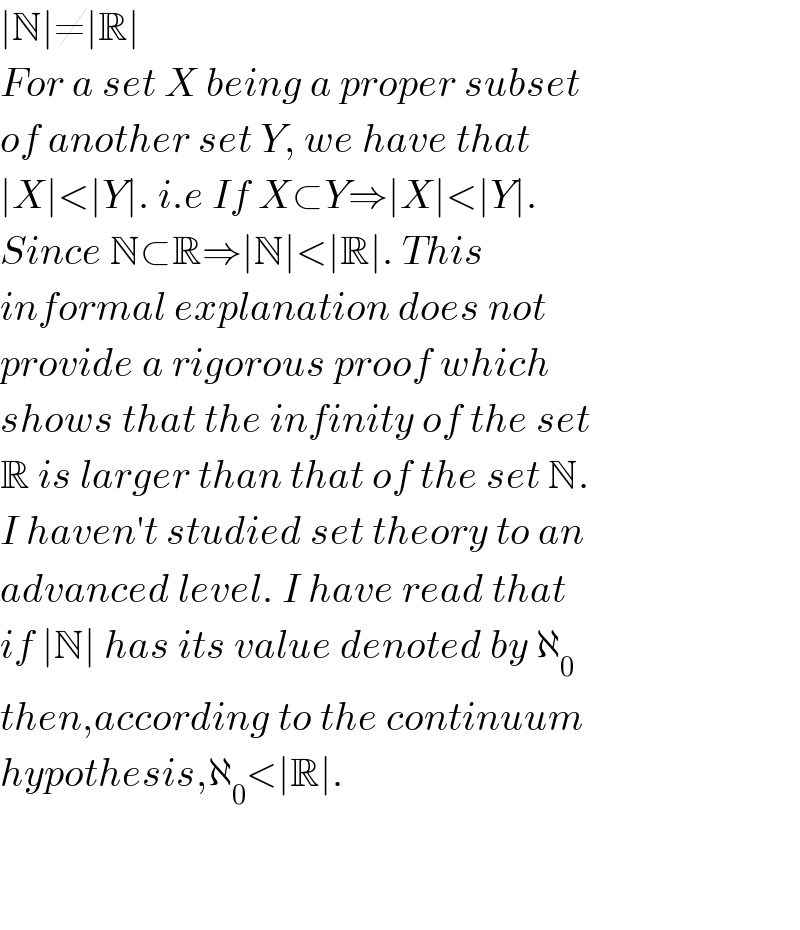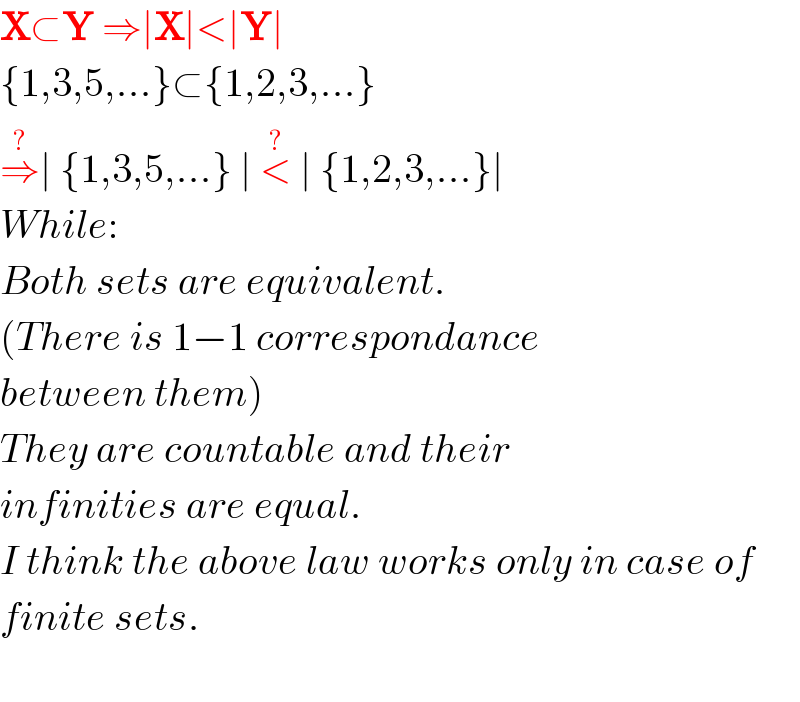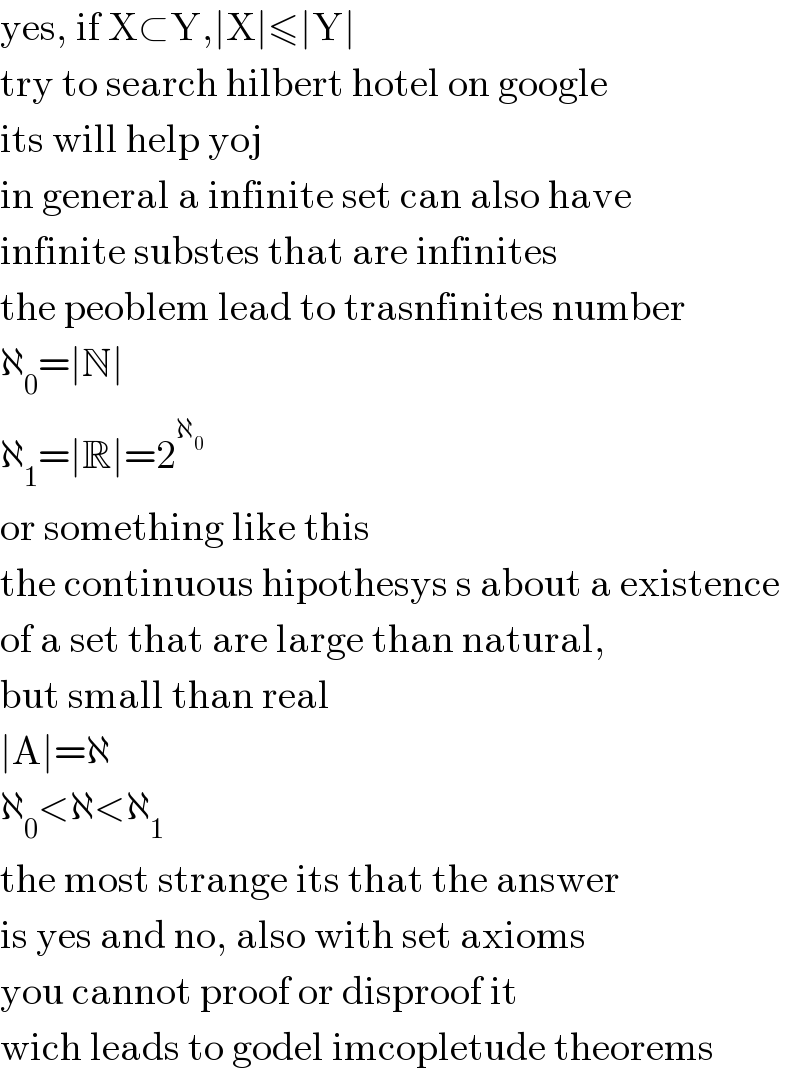
Question and Answers Forum
Question Number 1682 by Rasheed Soomro last updated on 31/Aug/15

Commented by 112358 last updated on 31/Aug/15

Commented by 123456 last updated on 31/Aug/15
![if two sets are equal you can make a 1−1 function with them, a set that are 1−1 with N are called contable however R dont is contable you can get number into [0,1] 0 0,1 0,2 ... and you still miss some number in other hand Q are contable and this is showed by diagolization argument so ∣Q∣=∣N∣](Q1685.png)
Commented by Rasheed Ahmad last updated on 31/Aug/15

Commented by 123456 last updated on 31/Aug/15

Commented by Rasheed Soomro last updated on 03/Sep/15

